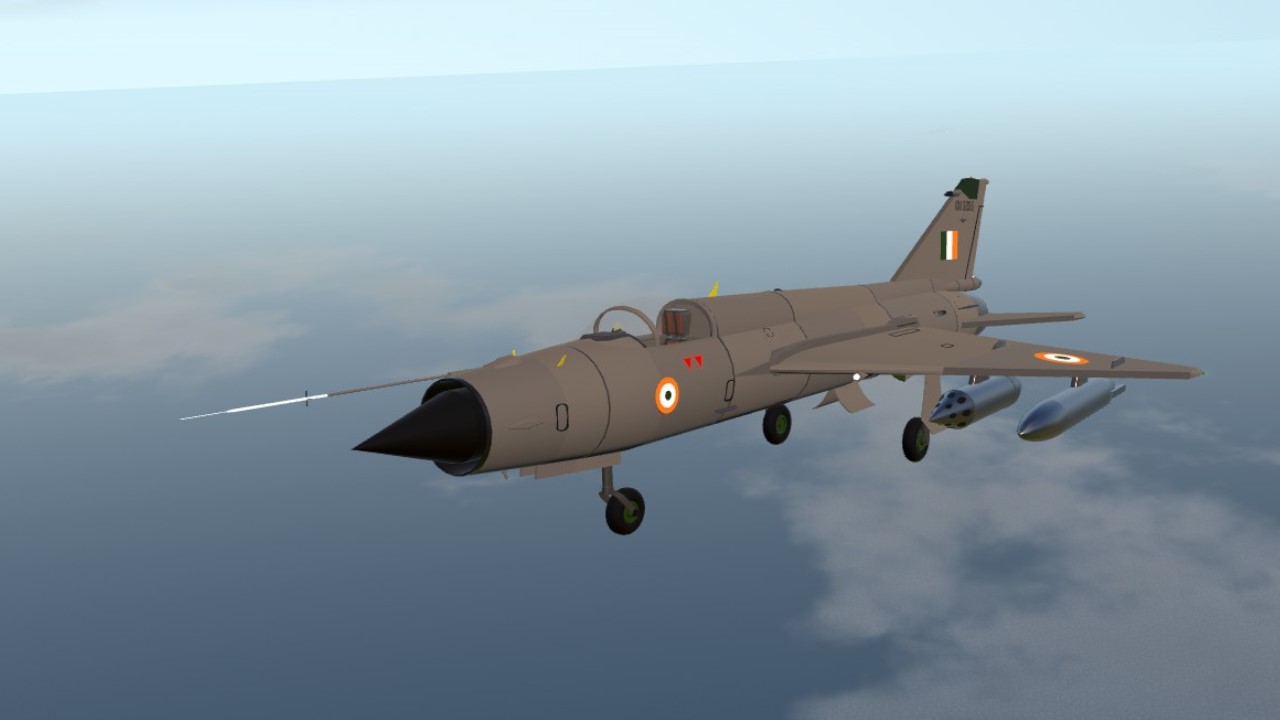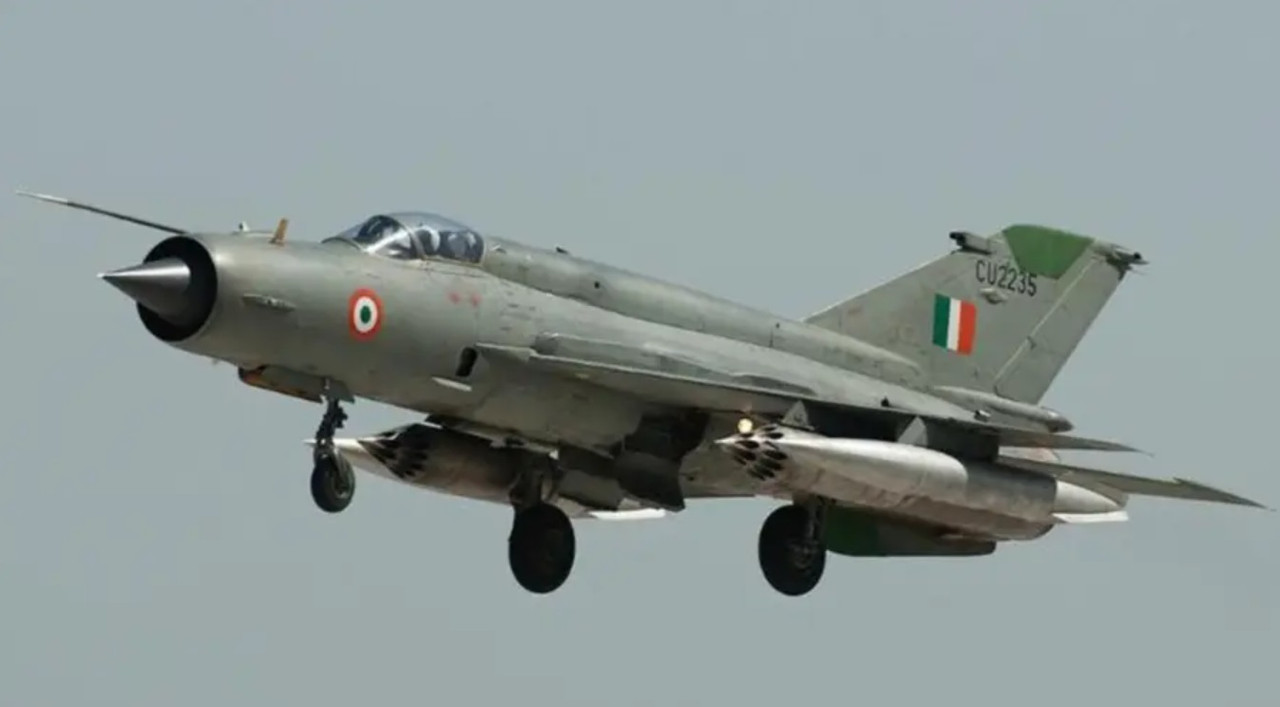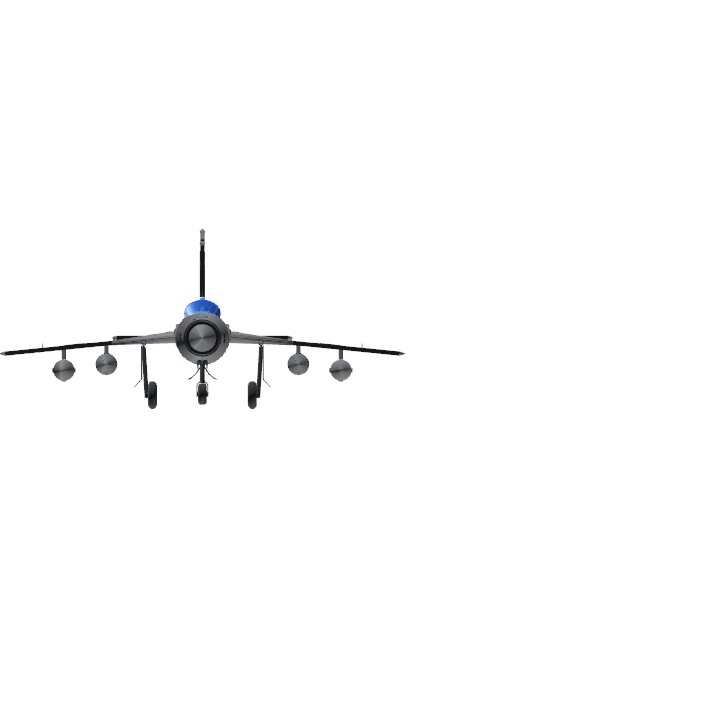Mig 21 Bison
Bonjour a tous , après une cinquantaine d'heures de travail réel , je vous propose une nouvelle version de mon Mig 21 ,
Nouveautés : cellule plus détaillée , poste de pilotage amélioré , domaine de vol modifié .
J'attire votre attention sur la difficulté du pilotage . J'ai tenté de reproduire les conditions réelles de vol avec plus ou moins de
réussite, c'est vous qui me le direz ....! . Tout le monde retient l'avion légendaire , mais pas le nombre d'accident dans les différentes
forces aériennes du monde . C'était un avion " de pilote " , et beaucoup de crashs on eu lieu a cause de jeunes pilotes inexpérimentés .
l'atterrissage d'un Mig 21 est rapide et assez rude , ne loupez pas le début de la piste : ( regardez les vidéos sur "youtube ) :
https://www.youtube.com/watch?v=Iq9vdzTrUek . Atterrissage du Mig 21 a partir de la dix neuvième Minutes .
Pour le décollage , puissance a 40% , correction au palonnier pendant le roulage assez importante .
J'espère encore améliorer cet avion grâce à mon travail et à votre aide . J'attends avec impatience vos votes et surtout vos commentaires .
L'aviation indienne reçut ses premiers MiG-21 en janvier 1963, lorsque six MiG-21F-13 arrivèrent à Bombay. Les sept pilotes qui avaient suivi un entraînement en URSS au cours des mois précédents purent alors commencer la formation des autres pilotes indiens au sein de la 28e escadre "The First Supersonics". Après deux accidents, le nombre d'appareils encore en service n'était plus que de trois. En mars 1965, l'escadre reçut six MiG-21FL qui complétèrent les effectifs avant la guerre de 1965 contre le Pakistan. Le 4 septembre, un vol de quatre FL engagea le combat contre des F-86 Sabre pakistanais lors de la couverture de frappes au sol. Bien que les MiG se soient très bien comportés lors du combat, les missiles K-13 furent plus que décevants, deux tirs à moins de deux kilomètres sur l'arrière d'un Sabre ne donnant aucun résultat. Le 6, l'escadre fut bombardée au sol et perdit un avion. La guerre se termina donc sans que le MiG, qui avait prouvé une indéniable supériorité lors des manœuvres, ne puisse conclure par des victoires aériennes, faute d'un armement adéquat.
Les pilotes indiens réclamèrent alors le montage d'un canon et d'un viseur pour l'utiliser, ainsi que des freins réellement efficaces et des pneus de meilleure qualité. Néanmoins, en attendant ces modifications, sept escadres supplémentaires abandonnèrent leur Mystère et Ouragan contre des MiG flambant neufs, dont les premiers produits localement à Nashik. De plus, les premiers MiG-21U d'entraînement commençaient à être livrés. Lorsque la Troisième Guerre indo-pakistanaise s'ouvrit par un raid préventif sur les aérodromes indiens le 3 décembre 1971, peu d'avions avaient reçu des pods canons GP-9 mais le MiG-21 allait enfin prouver sa valeur. Ceux de la 4e et la 28e escadre se distinguèrent en paralysant l'aviation pakistanaise présente au Bangladesh, en réduisant les pistes du pays en champs de cratères. Et surtout, le 14 décembre, grâce aux renseignements, la 28e effectua un raid extrêmement précis à la roquette sur la maison du gouvernement de Dhaka, qui joua pour beaucoup dans l'abandon de la souveraineté pakistanaise sur le Bangladesh.
Sur le front ouest, l'avion allait prouver sa supériorité dans les airs, y compris contre son rival occidental le Lockheed F-104 : au cours de trois engagements successifs, les MiG-21 indiens envoient quatre F-104 au tapis, plus un Shenyang F-6 et plusieurs Sabre. Un seul MiG-21 sera perdu en combat aérien, touché par un Sidewinder tiré d'un Sabre. En revanche, cinq seront abattus par l'artillerie antiaérienne pakistanaise et trois autres seront perdus par accident. En quinze jours, le MiG-21 s'était établi une réputation chez les Indiens qui voient en lui encore de nos jours un formidable chasseur. L'utilisation de l'avion est ininterrompue depuis lors, les versions modernisées comme le MiG-21/93 Bison constituant une grande partie de la défense aérienne du pays jusqu'a son retrait prévu en 2025.
Réacteur : touche 1 .
Feux de navigation : touche 2 .
Feux de d'atterrissage : touche 3 .
Allumage radar : touche 4 .
Allumage collimateur : touche 5 .
Largage réservoir externe aile : touche 6 .
Parachute : touche 7 .
Ouverture cockpit : touche 8 .
Volets : touche VTOL .
Trim : trim .
English version . Traduction bye google .
Mig 21 Bison:
Hello everyone, after around fifty hours of real work, I offer you a new version of my Mig 21,
New features: more detailed airframe, improved cockpit, modified flight envelope.
I draw your attention to the difficulty of piloting. I tried to reproduce real flight conditions with more or less
success, it's you who will tell me....! . Everyone remembers the legendary plane, but not the number of accidents in the different
air forces of the world. It was a "pilot's" plane, and many crashes occurred due to young, inexperienced pilots.
landing a Mig 21 is quick and quite rough, don't miss the start of the runway: (watch the videos on "youtube"):
https://www.youtube.com/watch?v=Iq9vdzTrUek. Landing of the Mig 21 from the nineteenth minute.
For takeoff, , power at 40%, correction to the rudder during taxiing quite significant .
I hope to further improve this plane thanks to my work and your help. I look forward to your votes and especially your comments.
The Indian Air Force received its first MiG-21s in January 1963, when six MiG-21F-13s arrived in Bombay. The seven pilots who had undergone training in the USSR during the previous months were then able to begin training the other Indian pilots within the 28th squadron "The First Supersonics". After two accidents, the number of aircraft still in service was reduced to three. In March 1965, the squadron received six MiG-21FLs which completed the strength before the 1965 war against Pakistan. On September 4, a flight of four FL engaged Pakistani F-86 Sabers while covering ground strikes. Although the MiGs performed very well in combat, the K-13 missiles were more than disappointing, with two shots less than a mile into the rear of a Saber yielding no results. On the 6th, the squadron was bombed on the ground and lost one plane. The war therefore ended without the MiG, which had proven undeniable superiority during maneuvers, being able to conclude with aerial victories, due to lack of adequate armament.
The Indian pilots then demanded the installation of a cannon and a sight to use it, as well as truly effective brakes and better quality tires. However, while awaiting these modifications, seven additional squadrons abandoned their Mystère and Ouragan for brand new MiGs, the first of which were produced locally in Nashik. Additionally, the first training MiG-21Us were beginning to be delivered. When the Third Indo-Pakistani War opened with a pre-emptive raid on Indian airfields on December 3, 1971, few aircraft had received GP-9 cannon pods but the MiG-21 would finally prove its worth. Those of the 4th and 28th squadrons distinguished themselves by paralyzing the Pakistani air force present in Bangladesh, reducing the country's runways to fields of craters. And above all, on December 14, thanks to intelligence, the 28th carried out an extremely precise rocket raid on the government house in Dhaka, which played a large part in the abandonment of Pakistani sovereignty over Bangladesh.
On the western front, the aircraft would prove its superiority in the air, including against its western rival the Lockheed F-104: during three successive engagements, the Indian MiG-21s sent four F-104s to the ground, plus one Shenyang F-6 and several Sabres. Only one MiG-21 will be lost in aerial combat, hit by a Sidewinder fired from a Saber. On the other hand, five were shot down by Pakistani anti-aircraft artillery and three others were lost by accident. In two weeks, the MiG-21 had established a reputation among the Indians who still see it as a formidable fighter today. The aircraft's use has been uninterrupted since then, with modernized versions like the MiG-21/93 Bison making up a large part of the country's air defense until its planned retirement in 2025.
Reactor: key 1.
Navigation lights: button 2.
Landing lights: key 3.
Radar switch on: button 4.
Collimator switch on: button 5.
External wing tank release: button 6.
Parachute: key 7.
Cockpit opening: button 8.
Flaps: VTOL button.
Trim: trim.
Specifications
General Characteristics
- Predecessor Mig 21 PF-13 Fishbed D Camo Ver 3
- Created On Windows
- Wingspan 55.5ft (16.9m)
- Length 53.7ft (16.4m)
- Height 20.5ft (6.3m)
- Empty Weight 11,251lbs (5,103kg)
- Loaded Weight 29,688lbs (13,466kg)
Performance
- Power/Weight Ratio 10.219
- Wing Loading 138.8lbs/ft2 (677.5kg/m2)
- Wing Area 213.9ft2 (19.9m2)
- Drag Points 7127
Parts
- Number of Parts 559
- Control Surfaces 5
- Performance Cost 2,194







@XEPOH , Thanks for your upvote .
@VeryPlain , thank for your upvote.
@Chaunhkhoa , thank for your upvote .
@AndiTontrando , thank for your upvote .
@Zachybobo , thank for your comment and your upvote .
It’s great
@Eagleman010, thank for your upvote.
@ChaseRacliot, it's nice modernisé version.
@Trainzo by the way our latest build are the same aircraft 😁
@Trainzo you are welcome :)
@ChaseRacliot, thank for your upvote..
@Christiant2, thank for your upvote and tour comment.
Incredibly beautiful aircraft. Great job.
@BeauMustang , thank for your upvote .
@BeauMustang , thank for you comment .
Absolutely amazing aircraft!
@QuantityPlayer , thank for your upvote .
@UseGooglePlay , thank for your upvote .
@Trainzo no problem bro🤙🏻🤙🏻
@STALIN83, thank for your upvote bro.
Deam mixe mig👍🏻👍🏻
@F1Fan8910 , thank for your upvote .
@Trainzo You're welcome, it's a great plane
@SoggedWing , It was a very long job .
@SoggedWing , thank for your comment .